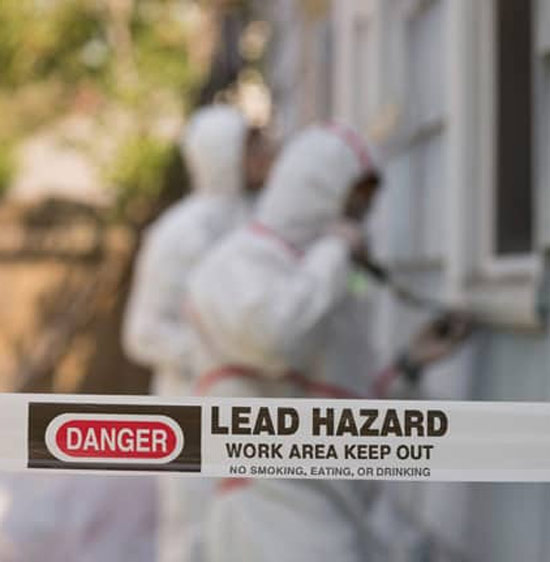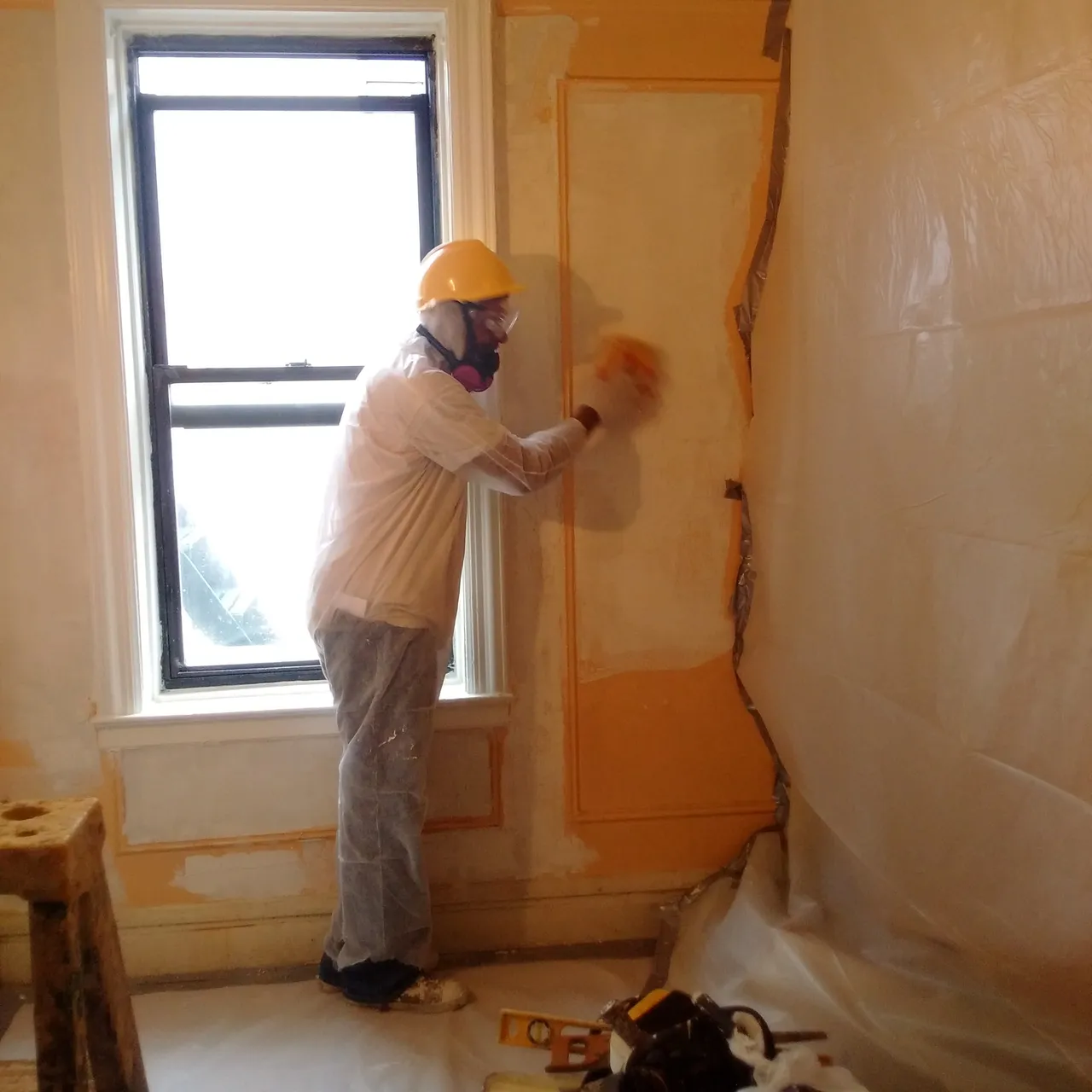Step-by-Step Process for Effective Lead Offense Removal
Following this, adherence to government and state policies is vital to creating a reliable remediation strategy. The real removal needs proficient workers to implement these strategies while strictly adhering to safety methods. What occurs after the removal is completed?

Discovery and Assessment
Discovery and assessment are important action in the removal of lead infractions. To make sure an effective remediation procedure, it is vital to carry out a comprehensive examination of the atmosphere where possible lead exposure exists. The preliminary stage of discovery involves determining resources of lead contamination, which can be found in paint, pipes, dirt, and dirt. Utilizing sophisticated analysis devices such as X-ray fluorescence (XRF) analyzers and atomic absorption spectroscopy (AAS) can offer exact dimensions of lead concentrations.
This consists of reviewing the level and intensity of contamination, as well as determining populations at risk, specifically kids and expecting women. The collected information ought to be meticulously recorded to sustain the development of a reliable removal technique.
Furthermore, it is necessary to focus on areas with the highest degrees of contamination and those that present the best health and wellness dangers. Reliable interaction with stakeholders, including residential or commercial property owners, citizens, and public wellness authorities, is vital for making sure that all events are educated regarding the findings and the succeeding steps needed for remediation. This first detection and analysis phase lays the foundation for a successful lead offense remediation procedure.

Lawful and Regulative Compliance
Browsing the landscape of legal and regulatory conformity is a critical aspect of successful lead infraction remediation. Conformity ensures not just the security of damaged populations but likewise the trustworthiness and lawful standing of the organization in charge of remediation. Rules regulating lead contamination are multifaceted, including government, state, and regional regulations. At the federal degree, the Epa (EPA) sets rigid standards under the Hazardous Substances Control Act (TSCA) and the Lead-Based Paint Restoration, Repair, and Paint Regulation (RRP Guideline)
State and regional laws can vary, usually enforcing additional obligations or more strict requirements. As a result, a thorough understanding of all pertinent lawful structures is critical. This entails thorough documents of all removal tasks to show compliance. Failure to abide by these regulations can result in extreme fines, consisting of large fines, legal action, and reputational damages.
Involving legal experts concentrated on ecological legislation can help with browsing these intricacies. Regular training and certification for all employees associated with the remediation procedure are likewise obligatory to ensure adherence to safety and security and regulative standards. By focusing on legal and governing compliance, organizations can successfully reduce threats and accomplish a successful removal outcome.
Preparation the Remediation
Properly preparing the removal of lead infractions starts with a complete assessment of the polluted website. This preliminary analysis ought to consist of a comprehensive website investigation to determine the extent and concentration of lead contamination. Comprehensive sampling and research laboratory analysis are critical to produce an exact contamination profile. This data-driven approach makes certain that remediation initiatives are properly targeted and efficient.
As soon as the contamination is mapped, a risk evaluation need to be conducted to assess prospective wellness threats article to humans and the atmosphere. Lead Violation Removal in NYC. This evaluation must take into consideration factors such as direct exposure paths, populace susceptability, and ecological impacts. The understandings gathered will develop the basis for picking an ideal removal strategy
Subsequently, setting clear, achievable click to read more objectives for the remediation project is important. These goals must line up with regulative requirements and stakeholder assumptions to make sure conformity and neighborhood approval. Establishing an in-depth remediation plan that describes techniques, timelines, and resource allocation will facilitate an organized strategy to the cleaning process.
Furthermore, it is vital to engage with stakeholders early and maintain clear interaction throughout the preparation phase. This includes educating regional neighborhoods, obtaining necessary authorizations, and collaborating with regulative agencies to ensure all lawful and procedural demands are met. A well-crafted remediation strategy not just attends to the contamination efficiently but additionally develops count on and cooperation amongst all celebrations involved.
Implementing the Remediation
With a well-structured remediation strategy in place, the emphasis moves to the real execution of the removal activities. This phase includes mobilizing the essential resources, consisting of proficient personnel, customized equipment, and high-grade materials. Begin by plainly defining duties and obligations to make sure accountability and seamless sychronisation amongst staff member.
This consists of setting up containment areas to stop lead dirt and particles from dispersing, as well as employing air filtration systems to preserve air high quality. Make use of approaches such as damp scratching, chemical stripping, or encapsulation, depending on the severity and location of the contamination.
Throughout the remediation process, conduct regular assessments and air top quality checking to ensure compliance with governing criteria. Reliable communication with stakeholders, consisting of property proprietors and passengers, is important to maintain them educated of progression and any kind of unanticipated growths. By diligently adhering to these actions, the removal activities can be performed effectively and efficiently, ultimately mitigating lead hazards.
Post-Remediation Strategies
Post-remediation approaches play a critical duty in making certain the long-lasting success of lead infraction remediation initiatives. These approaches include ongoing monitoring, upkeep, and neighborhood education to avoid future lead direct exposure and make sure a risk-free environment.
First, normal tracking is important. This entails regular testing of the formerly impacted locations to make sure that lead levels continue to be within risk-free limits. Homeowner need to establish a timetable for these tests, ideally in partnership with certified ecological professionals.

Third, educating the area plays a critical great post to read role in maintaining the advantages of remediation. Residents and building managers need to be informed concerning the risks of lead direct exposure and the best techniques for maintaining a lead-safe atmosphere. Workshops, informational pamphlets, and area conferences can be reliable tools for distributing this details.
Final Thought
Effective lead violation removal calls for an extensive, organized method incorporating discovery and assessment of contamination, adherence to lawful and governing standards, careful preparation, and effective execution of removal initiatives. Post-remediation strategies, including constant surveillance and community education, are vital to maintain a lead-safe environment. Partnership with ecological specialists ensures continuous conformity and defense of public wellness. This methodical process underscores the significance of thoroughness and caution in resolving and mitigating lead contamination.